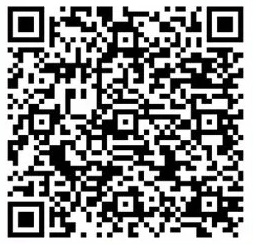The Socio-Culture Environment in Ethiopia
Regions and
Languages
Ethiopia has many official languages: Oromo (the official working language in the State of Oromiya) 33.8%, Amharic (the official national language) 29.3%, Somali (the official working language of the State of Sumale) 6.2%, Tigrigna (Tigrinythe a) (the official working language of the State of Tigray) 5.9%, Sidamo 4%, Wolaytta 2.2%, Gurage 2%, Afar (the official working language of the State of Afar) 1.7%, Hadiyya 1.7%, Gamo 1.5%, Gedeo 1.3%, Opuuo 1.2%, Kafa 1.1%, other 8.1%, English (major foreign language taught in schools), Arabic (2007 est.).
Ethiopia has close ties with all three major Abrahamic religions, and it was the first in the region to officially adopt Christianity in the 4th century.
Christians account for 66.6% of the country's population, with 43.8% belonging to the Ethiopian Orthodox Church. Ethiopia has the first Hijra in Islamic history and the oldest Muslim settlement on the continent. Muslims account for 31.3% of the population, traditional 0.6%, other 0.8% (2016 est.).
Ethiopia is home to various ethnicities, predominantly the Oromo at 35.8% of the country's population, and the Amhara, who account for 24.1% of the population. Other major ethnic groups include the Somali (7.2%), Somali 7.2%, Tigray 5.7%, Sidama 4.1%, Guragie 2.6%, Welaita 2.3%, Afar 2.2%, Silte 1.3%, Kefficho 1.2%, other 13.5% (2022 est.).
Population
- Population in Ethiopia is about 123,558,949 (2022, 12th most populous globally)
- Population Growth Annual Rate: 2.66% (2022)_ranked 25 globally.
- Birth Rate: According to 2022, 30.49 births/1,000, ranked 29 globally.
- Death Rate according to 2022 is 5.7 deaths/1,000 population, ranked 173 highest globally.
- Net migration rate: -0.19 migrants/1,000 population, ranked 110 globally (2022).
- Infant Mortality Rate: 33.51 per 1,000 births (2022)- ranked 42 globally
- Life Expectancy at birth: 68.25 years (2022).

- The age dependency ratio for Ethiopia is 78.1% ranking 28 in Africa (above the average of 76.19%) and 29 globally (2021).
- 3.56% of the population aged 65 and above, which is the 16th highest in Africa (below the average of 3.79%)and 140 globally (2021).
- AIDS is very prevalent in Ethiopia and is exceptionally high. The adult prevalence rate was 0.9% in 2020, with 620,000 people with HIV/AIDS, ranked the 13th highest globally.
- The happiness index for Ethiopia is 4.24/10, making it the 28th happiest in Africa (2021).
- The Human Capital Index (HCI) for Ethiopia is 0.4 out of 1 (2020).
Negative impacts of the Socio-Culture of Ethiopia
- One major issue with healthcare is that hospitals are understaffed and overcrowded, recording 0.11 doctors per 1,000 people (2020) and 0.3 beds per 1,000 people (2016).
- Ethiopia has 29.84 points, the 4th lowest healthcare price index in Africa and 18th lowest globally (2017).
- The maternal mortality per 100,000 live births is 401, making Ethiopia the 22nd highest in Africa and 24th highest globally (2017).
- Ethiopia has 49 deaths of children under 5 years per 1000 live births, the 29th highest in Africa and the 34th highest globally (2020).
- Ethiopia is ranked 175/191 on the Human Development Index(HDI) with a 0.498 value, no increase from 2020, which is slightly below the global average of 0.732 (2021). Ethiopia’s HDI value is a low Human Development Classification.


